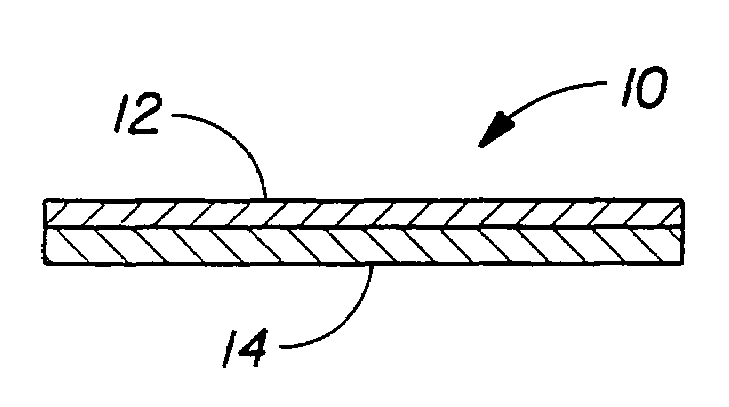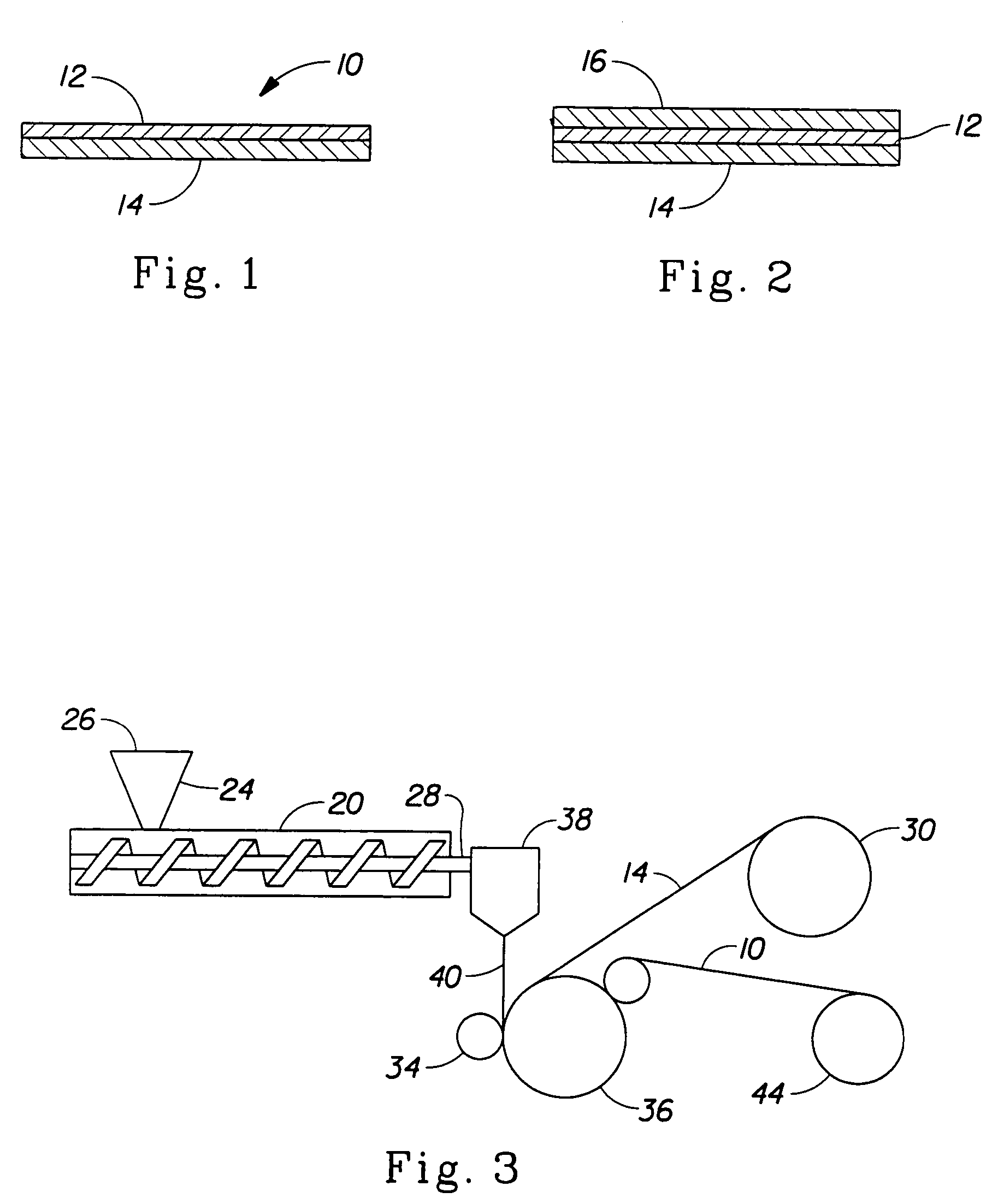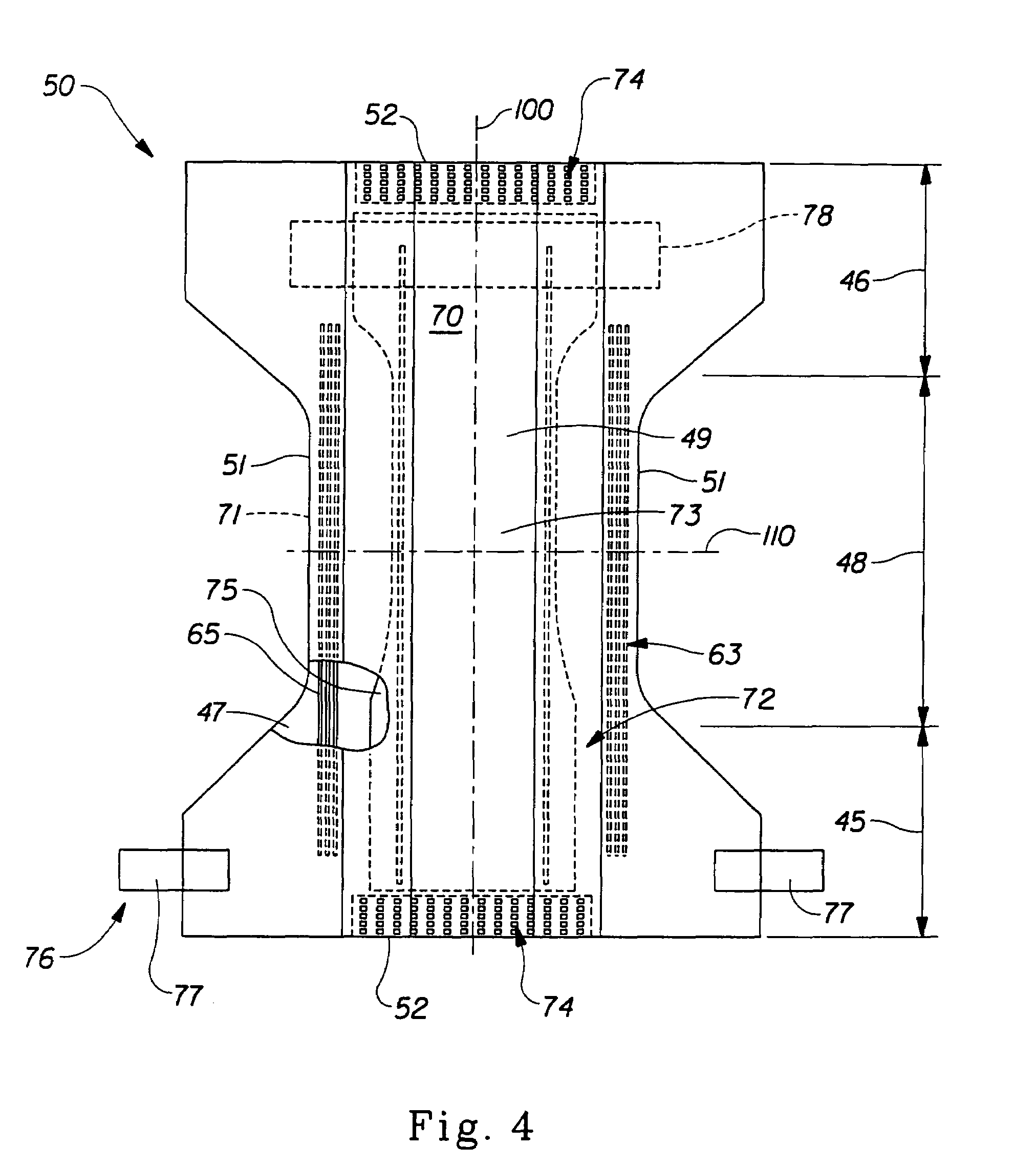Breathable composite sheet structure and absorbent articles utilizing same
a composite sheet and absorbent material technology, applied in the field of moisturizing composite sheet structure, can solve the problems of increasing the odor of plastic film, difficult to distribute microbial adsorbents throughout a microporous film, and uncomfortable skin irritation of garments made with plastic film
- Summary
- Abstract
- Description
- Claims
- Application Information
AI Technical Summary
Benefits of technology
Problems solved by technology
Method used
Image
Examples
example 1
[0130]A composition was prepared by dry blending 86% by weight of a copolyether ester thermoplastic elastomer (Hytrel® 4778 obtained from DuPont) with 4% by weight of a UV stabilizer concentrate (Hytrel® 20UV, obtained from DuPont), 4% by weight of a heat stabilizer concentrate (Hytrel® 30HS obtained from DuPont), and 6% by weight of a maleic anhydride modified polyolefin copolymer (Fusabond® 373 obtained from DuPont Canada). Fusabond® is a registered trademark of DuPont Canada. The composition was fed to a melt extrusion coating line including a single screw extruder with an attached mixing head. The screw extruder was made by Egan Division of Davis-Standard Corporation. The heating zones of the extruder heat the polymer to a temperature above its melting point. The melted polymer mixture was fed to a film die with a width of about 90 cm that was maintained at about 220° C. The polymer was laminated onto a corona treated nonwoven polypropylene textile material (Typar® thermobonded ...
example 2
[0131]The Typar® nonwoven fabric of Example 1 was replaced with a nonwoven polyester (compatible with copolyether ester polymers) fabric (obtained from Freudenberg, Germany) and the resulting laminate had peel strength values of 0.88 N / cm (MD) and 1.06 N / cm (CD) and an MVTR value of 750 g / m2 / 24 hr (by method ASTM E96-B).
example 3
[0132]A composition was prepared by dry blending 70% by weight of a copolyether ester thermoplastic elastomer (Hytrel® 8206 obtained from DuPont) with 4% by weight UV stabilizer (Hytrel® 20UV), 4% by weight heat stabilizer (Hytrel® 30HS), 8% by weight of a maleic anhydride modified polyolefin copolymer (Fusabond® 373) and 14% by weight of a polypropylene polymer resin (PF331 obtained from Montell Polyolefins, Wilmington, Del.). The blend was extruded under the same conditions as described in Example 1 and melt laminated to the same Typar® nonwoven fabric described in Comparative Example 2. The resulting laminate had a coating thickness of about 25 microns and peel strength values of 0.26 N / cm (MD) and 0.18 g / cm (CD) and an MVTR of 800 g / m2 / 24 hr (by method ASTM E96-B).
PUM
| Property | Measurement | Unit |
|---|---|---|
| peel strength | aaaaa | aaaaa |
| peel strength | aaaaa | aaaaa |
| thickness | aaaaa | aaaaa |
Abstract
Description
Claims
Application Information
 Login to View More
Login to View More - R&D
- Intellectual Property
- Life Sciences
- Materials
- Tech Scout
- Unparalleled Data Quality
- Higher Quality Content
- 60% Fewer Hallucinations
Browse by: Latest US Patents, China's latest patents, Technical Efficacy Thesaurus, Application Domain, Technology Topic, Popular Technical Reports.
© 2025 PatSnap. All rights reserved.Legal|Privacy policy|Modern Slavery Act Transparency Statement|Sitemap|About US| Contact US: help@patsnap.com



